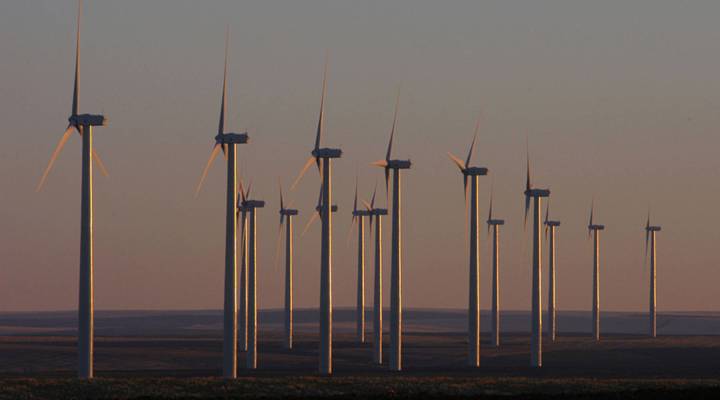
A new wind turbine inspired by a palm tree, big as the Empire State Building
A new wind turbine inspired by a palm tree, big as the Empire State Building

The Energy Information Administration says the United States got about 11 percent of its energy from renewable sources last year. Climate scientists say that’s going to have to go up a lot to ward off the worst effects of climate change.
The Department of Energy says the U.S. is one of the fastest-growing markets for wind power in the world. That’s mostly on land. Eric Loth, at the University of Virginia, is an engineer who’s part of a team building the next generation of offshore wind turbines. Those turbines towering over fields or deserts usually produce 5 megawatts of power each.
“We want to have turbines as large as 50 megawatts,” Loth said. “And the size of that would be like the Empire State Building, even larger. So you’re talking about being able to power a small city with one of these wind farms. And I think that’s where we’re going. That’s where the future is.”
But plopping a wind turbine the size of the Empire State Building into the ocean is tricky. It has to withstand hurricane-force winds and be lightweight to keep operations efficient and long-lasting. Loth and his team are tackling the challenge with a little inspiration from a tree that has some experience withstanding the whiplash of hurricane-force winds: the palm tree.
“The palm tree can adapt its trunk, the fronds, as the wind blows so that without having a lot of material structure, they can adapt to winds,” Loth said. “And therefore we see palm trees near hurricane coastal regions, whereas a large oak tree, which is massive and stiff and strong, can be uprooted.”
Unlike turbines we see today, these blades face away from the wind, like a pinwheel you blow from behind. The blades are angled, so that as they spin around, they’re more in concert with the wind, not fighting it as much. That reduces the strain on the blades, which means they can be built from lighter material. It also means the blades can be much bigger, to catch more energy.
“With aerospace technology, whether it’s spacecraft, aircraft or wind turbines, mass translates to money,” Loth said. “So you really want to reduce your mass in order to reduce the cost of your project. And therefore, if we want to have a good cost of energy, basically low cost of energy, we really need to reduce the overall mass of our structure.”
The new offshore models will cost more to install than land-based turbines. But they also produce more energy. Loth said keeping costs in check will be key for this new tech to compete against natural gas.
“We have to think about the economics, make sure that whatever we develop has very low cost of energy, it doesn’t require any significant subsidies, that it can really stand on its own,” Loth added. “Not just from an environmental point of view, but from an economic point of view, because that’s what’s going to drive the growth more than anything else in the U.S. and worldwide.”
The team is building a smaller test model in Colorado. Loth said it could take a decade to see a full-size one in action.
By the way, he has a pet peeve. Don’t call them windmills. They’re turbines.
If Don Quixote went after one of these, he’d — first of all, need a boat — and also, it’d be a much shorter book.
There’s a lot happening in the world. Through it all, Marketplace is here for you.
You rely on Marketplace to break down the world’s events and tell you how it affects you in a fact-based, approachable way. We rely on your financial support to keep making that possible.
Your donation today powers the independent journalism that you rely on. For just $5/month, you can help sustain Marketplace so we can keep reporting on the things that matter to you.


















